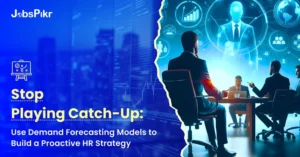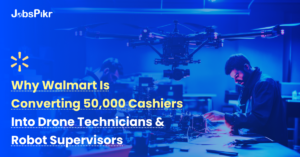In today’s competitive hiring landscape, creating meaningful relationships with potential hires is essential. Candidates expect more than a transactional recruitment process—they want to feel valued and engaged throughout their journey. Candidate engagement software plays a pivotal role in meeting these expectations by automating and personalizing interactions, leading to improved hiring outcomes.
This article delves into the features, benefits, and strategies of adopting candidate engagement tools, showcasing how they revolutionize talent acquisition. With the right candidate engagement platform, corporate HR departments can deliver exceptional candidate experiences while enhancing their recruitment efforts.
What is Candidate Engagement Software?

Candidate engagement software refers to tools designed to manage and enhance interactions with job seekers. These platforms streamline communication at every stage of recruitment, from initial outreach to post-hire engagement. By integrating with Applicant Tracking Systems (ATS) and Customer Relationship Management (CRM) platforms, they provide a unified approach to talent management.
This software focuses on building relationships through automated yet personalized communication. It ensures every candidate feels informed and valued, creating a seamless experience that reflects positively on the employer brand.
Why Candidate Engagement is Crucial for Talent Acquisition Success?
Candidate engagement isn’t just a nice-to-have—it’s a critical component of successful recruitment strategies. Here’s why it matters:
- Improves Candidate Experience
Candidates often judge an organization based on their hiring experience. Clear communication, timely feedback, and a personalized approach make candidates feel respected—even when rejected. Candidate engagement software automates and humanizes these touchpoints (e.g., interview confirmations, status updates), ensuring consistency and leaving a lasting positive impression.
Example: A personalized rejection email citing specific interview strengths (e.g., “Your solution to the case study showcased excellent strategic thinking”) encourages candidates to reapply or refer others, turning rejection into advocacy. - Increases Offer Acceptance Rates
Engaged candidates develop emotional investment in your company. Transparency about role expectations, team culture, and progress timelines builds trust. This reduces “offer shock” and positions your organization as their first choice—even against higher bids from less-engaged competitors.
Example: A candidate who received weekly video updates from the hiring manager and virtual team coffees is 3x more likely to accept an offer than one who endured radio silence for weeks. - Reduces Drop-Off Rates
Lengthy hiring processes test candidate patience. Disengagement breeds doubt (“Did they forget me?”), leading candidates to pursue alternatives. Automated engagement platforms combat this with scheduled nudges (e.g., “Your application is under review—we’ll update by Friday”).
*Example: Companies using status-triggered SMS updates see a 40% decrease in interview no-shows by eliminating scheduling ambiguity.* - Builds a Talent Pipeline
Only 10-20% of applicants get hired, but 80% may be future-fit. Nurturing these relationships through tailored content (e.g., industry reports, webinar invites) keeps your brand top-of-mind. Engagement tools segment candidates by skills, enabling instant outreach when roles open.
*Example: A tech firm’s quarterly “Innovation Digest” newsletter to past candidates led to 30% of its senior engineer hires in 2024, saving 60 days/search.* - Strengthens Employer Brand & Reputation
Candidate interactions directly impact your public image. Engaged candidates share positive experiences on Glassdoor/Social Media, while disgruntled ones amplify poor ones. Consistent engagement signals a respectful, people-first culture, attracting passive talent.
Example: A retailer’s “application receipt” video featuring real employees boosted its Glassdoor rating by 1.2 stars in 6 months, citing “transparent hiring”. - Enhances Quality of Hire
Engaged candidates provide richer insights during interviews. When they understand your mission and feel heard, they self-assess fit more accurately. This leads to more relevant questions, authentic conversations, and hires who thrive long-term.
*Example: A financial firm’s pre-interview “Culture Fit Quiz” (non-evaluative) prompted candidates to reflect on work preferences, leading to 25% lower turnover in Year 1.* - Supports Data-Driven Recruitment
Engagement platforms track response rates, feedback sentiment, and drop-off points. These metrics expose process gaps (e.g., 70% ghost after Round 2) and prove ROI to stakeholders.
*Example: Analysis showing 4-day email response delays caused 50% candidate loss justified hiring an additional recruiter—cutting time-to-fill by 20%.* - Reduces Cost-Per-Hire
Faster acceptances, lower drop-offs, and pipeline redeployment minimize reliance on expensive agencies/job boards. Engaged candidates also become referrers—your highest-quality, lowest-cost source.
*Example: An auto manufacturer saved $500k/year by re-engaging past silver-medalists instead of using agencies for 50% of roles.*

Benefits of Using Candidate Engagement Software in Recruitment
1. Streamlined Communication
Managing communication with multiple candidates manually can be overwhelming, especially during high-volume hiring. Candidate engagement software automates tasks such as sending emails, reminders, and follow-ups, ensuring consistent communication.
Example: HR team hiring for 50 positions can use engagement tools to automate confirmation emails for application submissions, interview scheduling, and feedback delivery.
2. Enhanced Personalization
Personalized interactions are crucial for creating a positive candidate experience. These tools analyze candidate data to craft messages tailored to their preferences, skills, and application status.
Example: Sending a personalized email that references a candidate’s specific skill set or career goals shows a genuine interest in their profile.
3. Improved Efficiency
By automating repetitive tasks, candidate engagement tools free up time for HR teams to focus on strategic activities like conducting interviews or refining recruitment strategies.
Example: Instead of manually following up with candidates after interviews, HR teams can rely on the software to send timely, personalized messages, saving hours of administrative work.
4. Consistent Feedback Delivery
Providing feedback, especially for rejected candidates, is often overlooked in recruitment. Engagement platforms simplify this process, ensuring every candidate receives constructive and timely feedback.
Example: After a candidate completes an assessment, the software can automatically send feedback detailing their performance and areas for improvement.
5. Boosted Employer Branding
Every touchpoint during recruitment contributes to how candidates perceive your organization. Using candidate engagement platforms to deliver a seamless and respectful hiring process enhances your employer brand, attracting high-quality talent in the long run.
Example: Candidates who receive thoughtful communication and transparent updates are more likely to recommend your company to their network, even if they weren’t selected.
What to Look for in Candidate Engagement Software?
When choosing candidate engagement tools, look for these essential features to ensure maximum impact:
1. Automated Communication
This feature enables HR teams to send emails, notifications, and reminders at scale without compromising personalization. Automation ensures candidates are informed and engaged at every step.
Example: Automated reminders for upcoming interviews or follow-ups on incomplete applications.
2. Advanced Personalization
The best candidate engagement platforms allow HR teams to tailor messages based on candidate data, ensuring interactions feel genuine and relevant.
Example: Sending an email highlighting how a candidate’s skills align with the company’s mission or specific job roles.
3. Analytics and Reporting
Engagement platforms provide insights into candidate behavior, such as open rates for emails or response times. These metrics help HR teams optimize their communication strategies.
Example: Identifying drop-off points in the application process and addressing them to improve retention.
4. Integration with Existing Systems
Seamless integration with ATS or CRM tools ensures that all candidate data is centralized, making it easier for recruiters to track progress and maintain records.
Example: Syncing parsed resume data with engagement tools to personalize communications.
5. Feedback Collection
Many candidate engagement tools include features for gathering feedback from candidates about their experience, enabling HR teams to refine their processes.
Example: Post-interview surveys to gauge candidate satisfaction and improve future interactions.
Top Use Cases for Candidate Engagement Software in Recruitment
- Intelligent Automation & Workflow Orchestration
Go beyond simple reminders: Seek platforms that trigger context-aware communications based on candidate actions (e.g., application submitted, interview completed, profile viewed) and stage-specific timelines. Dynamic workflows should adapt to delays or accelerations.
Example: If a hiring manager delays feedback, the system auto-sends a holding message (“Your interview feedback is being finalized – we appreciate your patience”) + alerts the recruiter internally. - Hyper-Personalization at Scale
Move beyond mail merge: Look for AI-driven content customization using candidate data (skills, past interactions, source, application history) and role/team context. Bonus: Tools that suggest recruiter talking points based on candidate profiles.
Example: Sending a development team’s recent project blog post to a candidate who mentioned Python expertise during screening, with a note from the hiring manager: “Thought you’d appreciate how we solved [relevant challenge].” - Predictive Analytics & Actionable Insights
Surface more than open rates: Demand dashboards showing engagement health scores (e.g., responsiveness decay, sentiment trends), drop-off prediction alerts, and correlation analysis (e.g., “Candidates receiving a hiring manager intro video within 3 days have 35% higher offer acceptance”).
Example: Identifying that candidates who don’t open 2+ consecutive status emails have an 80% likelihood of dropping out – triggering proactive recruiter calls. - Seamless Ecosystem Integration
Ensure true synergy: Verify native integrations not just with your ATS/CRM, but also with:- Calendar systems (automated interview scheduling with buffer time)
- HRIS (post-hire onboarding handoff)
- Collaboration tools (Slack/MS Teams alerts for recruiter action)
- Assessment platforms (personalized feedback based on test results)
Example: Syncing with LinkedIn Recruiter to auto-send personalized InMails to candidates stuck in review limbo.
- Omni-Channel Engagement & Mobile Optimization
Meet candidates where they are: Prioritize tools supporting SMS/WhatsApp, chatbots for FAQs, and video messaging – all with mobile-responsive design. 67% of candidates use mobile during job searches.
Example: A chatbot resolving scheduling conflicts via SMS, updating calendars in real-time, and notifying recruiters. - Feedback Intelligence & Sentiment Analysis
Transform passive data into action: Seek tools that automate feedback collection and analyze open-ended responses using NLP to detect frustration signals or enthusiasm gaps.
Example: Flagging a cluster of survey comments mentioning “unclear next steps” for specific roles, prompting process redesign. - Talent Rediscovery & Pipeline Nurturing
Maximize past investment: Require robust tagging/search to instantly find silver medalists or past applicants when new roles open. Look for automated nurture campaigns (e.g., drip content based on skills/interests).
Example: Auto-inviting previously rejected data scientists to an exclusive webinar on the company’s new AI lab, positioning future opportunities. - Compliance & Accessibility Safeguards
Mitigate risk: Ensure features like GDPR-compliant data storage, automated opt-out management, WCAG-compliant communications, and audit trails for all interactions.
Example: Auto-generating accessible PDF interview confirmations with screen-reader optimized formatting and GDPR-compliant retention rules.
How to Adopt Candidate Engagement Software for Enhanced Recruitment?
- Define Clear Objectives: Identify specific goals such as reducing time-to-hire, improving candidate experience, or increasing offer acceptance rates.
- Choose the Right Platform: Evaluate tools based on features, scalability, and integration capabilities to ensure they meet your organization’s needs.
- Train Your Team: Ensure HR staff understands how to use the software effectively, focusing on features that align with your objectives.
- Monitor and Optimize: Use analytics to identify what’s working and make data-driven adjustments to improve engagement metrics.

Conclusion on Candidate Engagement Software
Candidate engagement software is a game-changer for corporate HR departments aiming to deliver exceptional hiring experiences. By streamlining communication, automating repetitive tasks, and personalizing interactions, these tools not only attract top talent but also enhance your organization’s reputation as an employer of choice.
Ready to take your talent acquisition strategy to the next level? Sign up on Jobspikr today and discover the power of advanced candidate engagement tools designed for modern recruitment.



